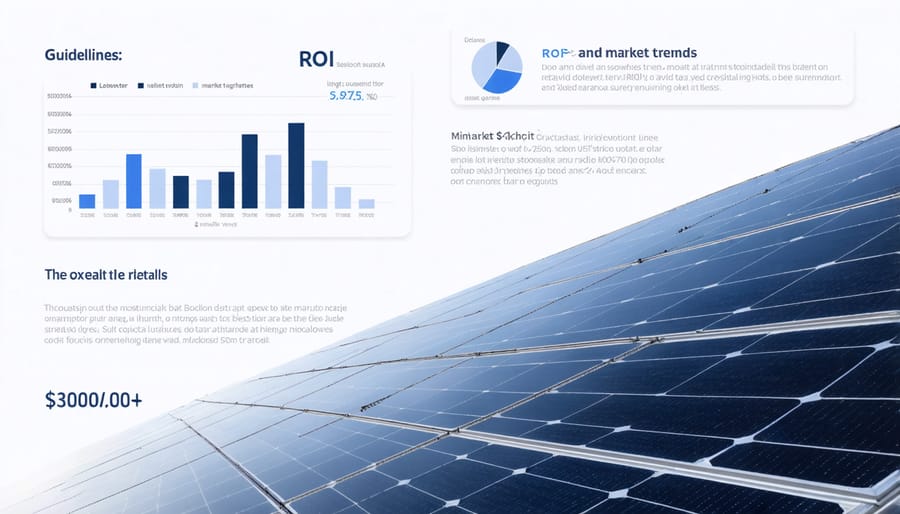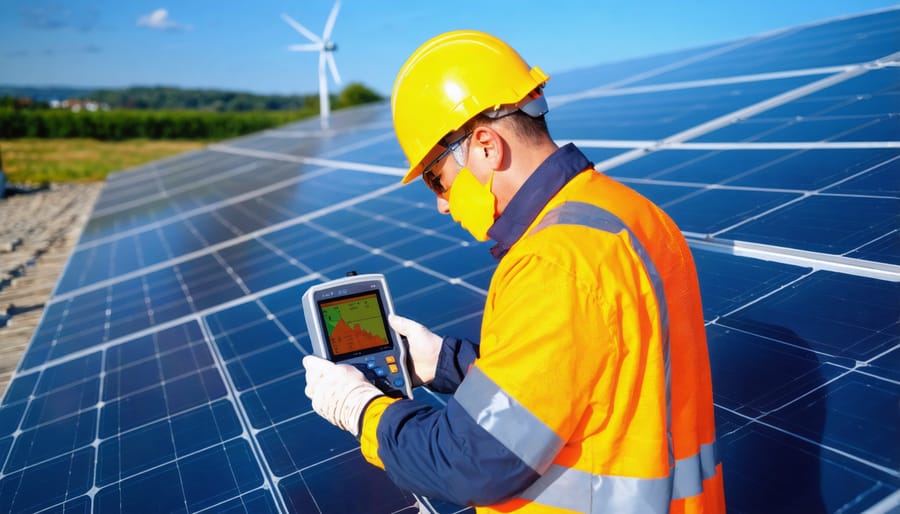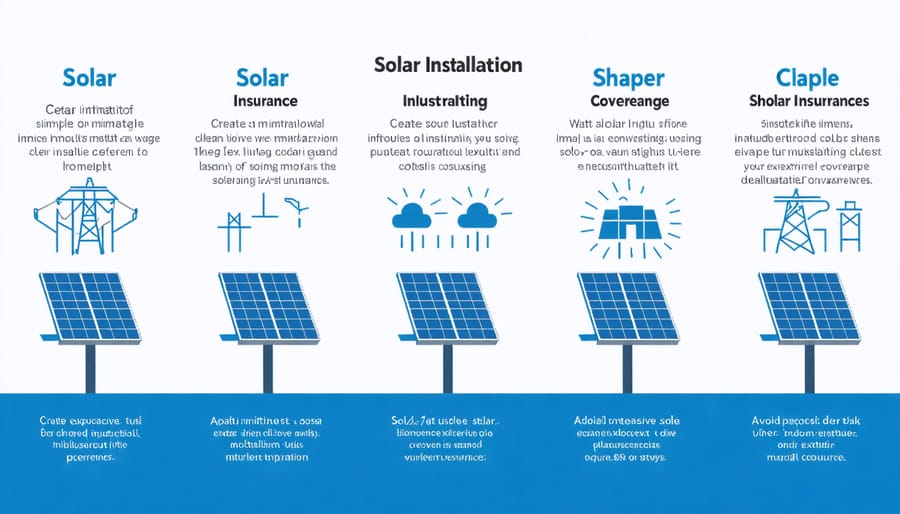Solar Investment Safety: Smart Risk Management Strategies That Protect Your PV Assets

Photovoltaic investments represent one of Europe’s most promising renewable energy opportunities, offering both environmental impact and substantial financial returns. As solar technology costs continue to decrease while efficiency improves, the European market has witnessed a remarkable 40% growth in PV installations over the past year alone. For investors and property owners, this presents a unique opportunity to participate in the clean energy transition while securing long-term revenue streams.
However, successful PV investments require careful consideration of multiple factors, from technical specifications and location analysis to regulatory compliance and risk management. The European Union’s commitment to achieving climate neutrality by 2050 has created a robust framework of incentives, including feed-in tariffs, tax benefits, and grants, making solar investments increasingly attractive across the continent.
Whether you’re a homeowner considering rooftop solar or an institutional investor exploring utility-scale projects, understanding the complete investment landscape is crucial. This comprehensive guide examines essential aspects of PV investments, from initial assessment and due diligence to long-term asset management, helping you make informed decisions in the evolving European solar market.
Key Financial Risks in PV Investments

Market and Revenue Risks
Electricity market dynamics significantly impact the financial performance of photovoltaic investments, making it crucial to understand potential revenue fluctuations. While solar project financing often relies on projected income streams, actual returns can vary based on several market factors.
Feed-in tariffs and power purchase agreements (PPAs) provide some revenue stability, but market prices for surplus energy can fluctuate considerably. The increasing integration of renewable energy into the grid has led to periods of negative pricing in some European markets, particularly during peak production hours. This price cannibalization effect can impact projected returns, especially for utility-scale installations.
To mitigate these risks, investors should consider implementing revenue stabilization strategies. These may include:
– Diversifying revenue streams through multiple PPAs
– Utilizing energy storage systems to shift sales to higher-price periods
– Participating in ancillary service markets
– Securing fixed-price contracts for a portion of the output
The European electricity market’s ongoing transition towards renewables presents both opportunities and challenges. While overall trends support long-term price stability, short-term volatility remains a consideration. Regular market analysis and adaptive management strategies are essential for maintaining consistent returns on PV investments.
Investors should also factor in seasonal variations and regional market differences when calculating potential revenues, as these can significantly impact the overall financial performance of solar installations.
Policy and Regulatory Risks
The landscape of European energy policies and regulations significantly impacts PV investment decisions. Changes in subsidy schemes, feed-in tariffs, and renewable energy incentives can directly affect project profitability and return on investment timelines. While the EU’s commitment to renewable energy remains strong, individual member states may adjust their support mechanisms, creating uncertainty for investors.
Key regulatory risks include unexpected modifications to grid connection requirements, changes in building permits and installation standards, and alterations to environmental compliance regulations. The phase-out or reduction of incentive programs can particularly impact project economics, as seen in several European markets where sudden policy shifts led to market adjustments.
To mitigate these risks, investors should maintain close relationships with industry associations, conduct thorough due diligence on local regulations, and build contingency buffers into financial models. Working with experienced legal advisors who specialize in renewable energy can help navigate complex regulatory frameworks and anticipate potential changes.
Many successful PV projects now incorporate flexible business models that can adapt to policy changes, such as combining multiple revenue streams or focusing on self-consumption schemes. This approach helps ensure project viability even when regulatory frameworks evolve, making investments more resilient to policy fluctuations.
Technical Risk Management
Equipment Performance Risks
Equipment performance risks represent a crucial consideration for any PV investment, with panel degradation being a primary concern. Modern solar panel performance technologies have significantly improved reliability, but natural degradation still occurs at an average rate of 0.5% to 0.8% annually for quality installations.
Manufacturing defects, while relatively rare in tier-one products, can impact system performance through microcracks, delamination, or potential-induced degradation (PID). These issues may develop gradually, affecting energy yield and financial returns over time. Weather-related stress, particularly in regions experiencing extreme temperature variations or heavy snow loads, can accelerate degradation and potentially lead to premature equipment failure.
Inverter reliability presents another critical consideration, as these components typically have shorter lifespans than solar panels. Most quality inverters offer 10-15 years of reliable operation, but replacement costs should be factored into long-term investment planning. Regular monitoring and maintenance can help identify and address performance issues before they significantly impact system output.
To mitigate these risks, investors should focus on selecting high-quality equipment with robust warranties, implementing comprehensive monitoring systems, and establishing preventive maintenance protocols. Performance guarantee insurance products are increasingly available in the European market, offering additional protection against unexpected degradation or equipment failure. These measures, combined with proper installation and regular professional inspections, help ensure optimal system performance throughout the investment lifecycle.
Operational Maintenance Strategies
Effective operational maintenance strategies are crucial for maximising the return on your PV investment while ensuring long-term system reliability. A comprehensive preventive maintenance programme typically combines regular physical inspections with advanced monitoring systems to detect and address potential issues before they impact performance.
Modern solar installations benefit from sophisticated monitoring solutions that track performance metrics in real-time. These systems analyse energy output, system efficiency, and component health, providing instant alerts when parameters deviate from expected values. This proactive approach helps identify underperforming panels, inverter issues, or connection problems promptly.
Physical maintenance schedules should include quarterly visual inspections of panels for dust accumulation, physical damage, or vegetation interference. Annual thorough inspections should assess electrical connections, mounting structure integrity, and inverter functionality. In regions with heavy snowfall or significant pollution, more frequent cleaning may be necessary to maintain optimal efficiency.
Documentation plays a vital role in maintenance strategy. Maintaining detailed records of inspections, repairs, and performance data helps track system health over time and supports warranty claims when needed. Many European installers now offer maintenance contracts that include regular check-ups, cleaning services, and performance guarantees.
The implementation of thermal imaging during inspections has become increasingly common, helping detect hot spots or potential component failures before they cause significant issues. Additionally, weather stations integrated with monitoring systems can help correlate performance data with environmental conditions, providing valuable insights for optimisation.
Investing in proper maintenance strategies typically costs between 0.5% and 1.5% of the initial system cost annually but can prevent costly repairs and ensure consistent energy production throughout the system’s lifetime.

Insurance Solutions for PV Investments

Essential Insurance Coverage Types
Protecting your photovoltaic investment requires a comprehensive understanding of solar investment insurance strategies and available coverage options. Several essential insurance types have emerged to address the specific risks associated with solar installations across Europe.
Property Insurance forms the foundation of PV system protection, covering physical damage from natural disasters, fire, and theft. This coverage typically extends to both the panels themselves and associated equipment such as inverters and mounting systems.
Business Interruption Insurance proves crucial for commercial installations, compensating for lost income during system downtime. This coverage ensures financial stability when unforeseen events disrupt power generation and subsequent revenue streams.
Performance Warranty Insurance provides additional security beyond manufacturer warranties, protecting against unexpected degradation in system efficiency or output below guaranteed levels. This coverage is particularly valuable for long-term investment planning and financing arrangements.
Professional Liability Insurance protects against design, installation, and maintenance errors. For system integrators and installers, this coverage is essential to safeguard against potential claims arising from professional services.
Environmental Risk Insurance addresses potential environmental damage claims and cleanup costs. This coverage becomes increasingly important as installations grow in size and complexity across various European landscapes.
Transit Insurance protects components during transportation and installation phases, a critical period when expensive equipment is particularly vulnerable to damage.
For optimal protection, these insurance products can be combined into comprehensive coverage packages tailored to specific project needs. Many European insurers now offer specialized solar energy insurance programs that bundle multiple coverage types, streamlining the insurance process while ensuring complete protection of your renewable energy investment.
When selecting coverage, consider factors such as installation location, system size, local weather patterns, and regulatory requirements specific to your region within Europe. Regular review and updates of coverage ensure continued alignment with evolving project needs and market conditions.
Selecting the Right Insurance Package
Selecting appropriate insurance coverage for your PV installation is crucial for long-term investment protection. The European solar market offers several specialized insurance packages, each designed to address specific risks associated with photovoltaic systems.
Start by assessing your basic coverage needs, which should include property damage protection against natural events like hail, storms, and lightning. This foundation-level coverage typically costs between 0.2% and 0.4% of the total system value annually. For comprehensive protection, consider adding performance guarantee insurance, which safeguards against lower-than-expected energy yields.
When evaluating insurance providers, prioritize those with extensive experience in renewable energy projects and a strong presence in the European market. Look for policies that offer:
– All-risk coverage for physical damage
– Business interruption insurance
– Third-party liability protection
– Performance ratio guarantee coverage
– Installation phase protection
Pay particular attention to coverage exclusions and deductibles. Some policies may exclude damage from certain weather events or require specific maintenance protocols. Standard deductibles typically range from 1% to 5% of the claim amount, but this can vary based on the coverage type and provider.
For commercial installations, consider additional coverage options such as:
– Serial defect protection
– Grid disconnection coverage
– Revenue loss protection
– Environmental liability insurance
Request quotes from multiple providers and compare their coverage terms, claim settlement history, and customer service quality. European insurers often offer package deals that combine different coverage types at competitive rates. Remember that the cheapest option isn’t always the most cost-effective in the long run.
Review your insurance needs annually, as system components age and technology evolves. Many providers offer sliding-scale premiums that adjust based on system age and performance history. Ensure your coverage keeps pace with any system upgrades or expansions you implement.
Effective risk management and insurance coverage are fundamental pillars for successful PV investments in Europe’s evolving solar energy landscape. As we’ve explored throughout this article, a multi-layered approach to risk mitigation is essential for protecting your solar investment and ensuring long-term project viability.
Key risk management strategies should focus on comprehensive technical due diligence, regular maintenance protocols, and robust monitoring systems. These foundational elements, when combined with appropriate insurance coverage, create a protective framework that safeguards your investment against both predictable and unforeseen challenges.
For European investors and project developers, insurance considerations should encompass property damage coverage, business interruption insurance, and performance warranty protection. The selection of insurance products should align with specific project requirements, local regulations, and regional climate conditions. It’s crucial to work with insurers who understand the nuances of solar technology and can provide tailored solutions for the European market.
Quality assurance measures, including equipment certification and installer accreditation, play a vital role in risk reduction. Regular system assessments and documentation of maintenance activities not only support insurance claims but also optimize system performance and longevity.
Financial protection strategies should include:
– Comprehensive all-risk insurance coverage
– Performance ratio guarantees
– Weather-related risk protection
– Third-party liability insurance
– Professional indemnity coverage for installers and contractors
Remember that risk management is an ongoing process that requires regular review and adjustment. As technology evolves and market conditions change, your risk management strategy should adapt accordingly. Consulting with insurance professionals who specialize in renewable energy projects can help ensure your coverage remains appropriate and cost-effective.
By implementing these risk management strategies and maintaining adequate insurance coverage, investors can protect their PV investments while contributing to Europe’s sustainable energy future. This comprehensive approach to risk mitigation not only protects your investment but also supports the continued growth and reliability of solar energy across the continent.
Leave a Reply